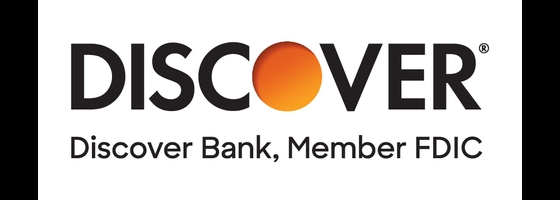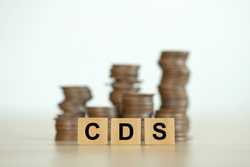What is a Bank Statement?

Our evaluations and opinions are not influenced by our advertising relationships, but we may earn a commission from our partners’ links. This content is created by TIME Stamped, under TIME’s direction and produced in accordance with TIME’s editorial guidelines and overseen by TIME’s editorial staff. Learn more about it.
A bank statement is a document that provides a detailed summary of all the financial activity that takes place in a checking, savings, or other type of bank account over a specific period, usually monthly. This includes deposits, withdrawals, fees, and interest credited. You might receive a printed copy by mail or, more typically, online.
Account holders use bank statements to reconcile accounts, track financial transactions, and watch for fraud. Regular review of your bank statements is the first line of defense in responsible money management. Here’s what you should know about your bank statement.
The statement provides insight into your income, expenses, and spending habits. According to Chase Bank, many people rely on their monthly bank statements to track spending like a budget. This can lead to finding ways to save money and cut back on unnecessary expenditures.
By regularly reconciling your records with the bank, you can uncover bookkeeping errors quickly and take action to protect your financial holdings. Ultimately, a bank statement provides a way to achieve financial peace of mind in a format that’s easy to understand if you know a few simple rules about how these documents work.
Banks, credit unions, and other deposit institutions provide account statements regularly. Depending on the type of account, you will receive or have access to your statements at monthly, quarterly, or semi-annual intervals.
Discover® Bank, for example, encourages customers to sign up for paperless statements. Each month, Discover® Bank sends an email informing you that your statement is ready to view online or on the Discover® mobile app. Simply log in to your account and click on the statement link. You can view the statement or print it out to create a physical record.
Most banks will send you a printed paper statement in the mail upon request. Some banks, such as Discover® Bank, don’t charge a fee for this service; others charge anywhere from $2 to $5 or more. Banks and credit unions must send or make a statement available if you’ve had at least one transaction during the statement period.
Bank statements aren’t complicated, but they contain much information. They report how much money you had in your account at the beginning and end of the statement period, and include all transactions within that time frame. The format will vary by financial institution. The bank statement will present the date range, the opening, and the closing balances of that date range. What happens in between are withdrawals and deposits that alter the current balance daily until the end of the statement period. Terms that may appear in a statement include:
Banks are meticulous but not faultless. Mistakes are rare, but they do happen. When you find one, quickly contact your bank or credit union to correct the error. Most financial institutions have a dispute-resolution process, including the ability to submit a dispute online or call an 800 number to speak with a banker.
Here are some time-saving steps you can take to correct bank statement errors.
The best indication a mistake has happened is when you reconcile the bank statement with your records. Reconciliation, explained below, should be done every statement period. If you think you have found a mistake, verify it and set aside any evidence you have for when you reach out to your bank.
Reach out to your bank’s customer service department by telephone or online to report the error. Be prepared to provide any proof you have and ask how best to send it to the bank. Most banks give you 60 days to report an error.
Some errors don’t involve the bank or credit union and were made by a third party, such as a retailer or payment issuer. Contact any involved third party to inform it of an error. In many cases, the third party can resolve the matter quickly without involvement by the bank.
Once the mistake is corrected, adjust your records as necessary. Remember that many “mistakes” are on the customer’s end and, if that is the case, it‘s essential that your and the bank’s records are the same.
Maintain a file with records of correspondence between you and the bank or third party. If an error reoccurs, fixing it won’t take as long if you know whom to contact early.
A bank statement consists of a beginning balance, an ending balance, and a series of positive or negative transactions that track the balance in your account at any given time during the statement period.
The beginning and ending balance lets you know how much money you had before any transactions took place and how much there was in your account at the end of the statement period.
Transactions on a bank statement appear in chronological order. Each time a transaction takes place, a record is made that lists the date, the type of transaction, the dollar amount, and the current balance.
There are two categories of transactions: withdrawals and deposits. A withdrawal is money taken out of the account. This can be due to point-of-sale (POS) transactions using a debit or associated credit card. Other withdrawal transactions can occur when you take money from an automatic teller machine (ATM) or write a check that is cashed. Another type of withdrawal happens when you pay interest or a fee.
Deposits happen when money goes into your account. They can be automatic, such as what happens with an automatic payroll direct deposit, or manual, such as when you deposit a check or cash. Income fund transfers, interest earned, and refunds of an amount previously spent are all types of deposits.
Sometimes, pending transactions show up as part of your online statement. Be sure to note whether the bank included any pending transactions in your balance. Some banks include pending transactions as soon as they show up. Others wait until the transaction has cleared.
If you write a check to someone, that is technically a pending transaction, but it will not show up until the recipient deposits it. Pending uncashed checks and charges that the retailer has not sent are some of the more common causes of discrepancies between customer records and bank records.
The law requires banks to retain customer records for five years. Many banks, such as Chase Bank, keep them for seven. How long you should personally keep statements depends on several factors.
| Length | Factors |
|---|---|
1 year | Statements that contain no relevant tax information or do not relate to a dispute with the bank can be shredded or deleted after one year. Delete these statements as they “age out,” so you will have at least one year’s worth of statements in case you apply for a loan or otherwise need records. |
1 to 3 years | Statements that are part of a dispute, should be retained for 1 to 3 years or until the dispute is settled. |
7 years | Statements used to calculate taxes should be kept for 7 years. If you can access them online, you may want to download and store pdf files in a secure folder on your computer. |
Bank statements provide a reliable record of transactions in your checking, savings, and other types of bank accounts. Your bank statement is a one-stop shop for keeping track of deposits, withdrawals, fees, and credited interest. They can also help you:
The information contained on a bank statement usually consists of the following:
The main difference between a paper bank statement and an electronic one is the format. Paper statements are typically mailed through the United States Postal Service once a month while electronic statements are typically offered online in display mode and as a downloadable pdf file at the end of the statement period.
Since most banks and credit unions offer statements online for free, paper statements often come with a fee ($2 to $5 is common). Note that you can usually download and print your online statement if you wish to have a paper copy.
If your bank offers both paper and online statements at no cost, the choice is yours. Many people prefer to avoid printed documents to save on natural resources and for security reasons. Since banks are required to store statements for five years and many store them for seven, online access is preferred by most people.
Banks and credit unions have extensive online security measures making online statements more secure than a paper statement that may sit in your mailbox for several hours. One aspect that favors paper statements, though, is ease of access since all you have to do is open the envelope and read.
The process to access an online statement, while not complicated, involves logging into your bank’s online portal, finding the location of your statement (often under Services or Account Information), then clicking on the appropriate link.
Reconciling your bank statement is how you verify transactions, check for fraud, and ensure there are no errors. Reconciling tells you if a check has been cashed, if you missed a payment, or paid a bill twice. It also tells you how you spend your money, a real help with your budgeting process.
To reconcile your bank statement manually:
You can also automate reconciliation by using products such as Quicken or YNAB (You Need A Budget) software. First Citizens Bank publishes conversion instructions that show how to reconcile accounts using Intuit products, including Quickbooks and Quicken.
Reconciliation software works with software used by most banks. You should reconcile your bank statement with your records whenever you receive one.
If you receive a paper statement in the mail and do not access your bank account online, you can only check your statement when it arrives. Be sure to do this regularly without fail. If you access your account online, you need to check your account before your monthly statement is available.
Many people reconcile or check their online bank accounts every week or even daily. You should check no less frequently than monthly, but with online access, a quick weekly check only takes a few minutes and can help you avoid major issues down the road.
Monitor and reconcile your bank statements regularly. Doing so will help you uncover errors, fraud, and even mistakes in your accounting that may lead to a false impression of your finances.
At a bare minimum, reconcile your accounts monthly by comparing your statements to your records or using automated reconciliation software. Report discrepancies immediately to your bank or a third party if that is the source of the problem.
Make it a habit to access and check all bank, credit card, and other financial statements when available. This practice will prevent costly unresolved errors and provide financial peace of mind.
Only the account holder has legal access to a bank statement. You can legally authorize another person to have access, and law enforcement can gain access if a judge grants permission.
Keep statements used to calculate your taxes for seven years. If your bank keeps your records for seven years and you can access them, you may not want to keep copies yourself.
You should retain non-tax-related statements for a year and statements related to a dispute between you and your bank or a third party until the dispute is resolved.
The law mandates that banks keep customer account records for at least five years. Some banks choose to keep them even longer (up to seven years).
Most common accounts, such as checking and savings accounts, cycle every 30 days. This can vary by financial institution. Other accounts may provide quarterly, semi-annual, or even annual statements.
Some banks and credit unions offer abbreviated statements through affiliated ATMs. A mini statement has limited information, and the bank may charge a fee for this service.
The information presented here is created by TIME Stamped and overseen by TIME editorial staff. To learn more, see our About Us page.




